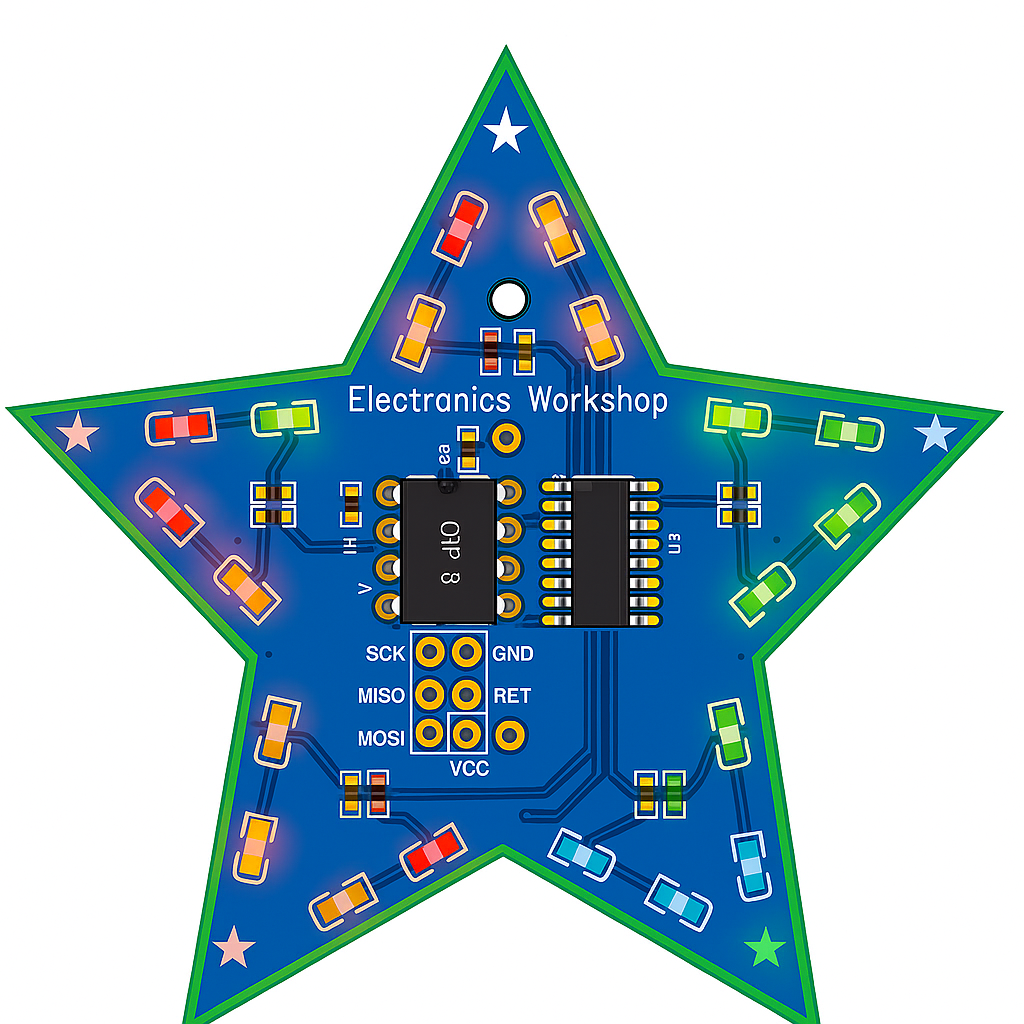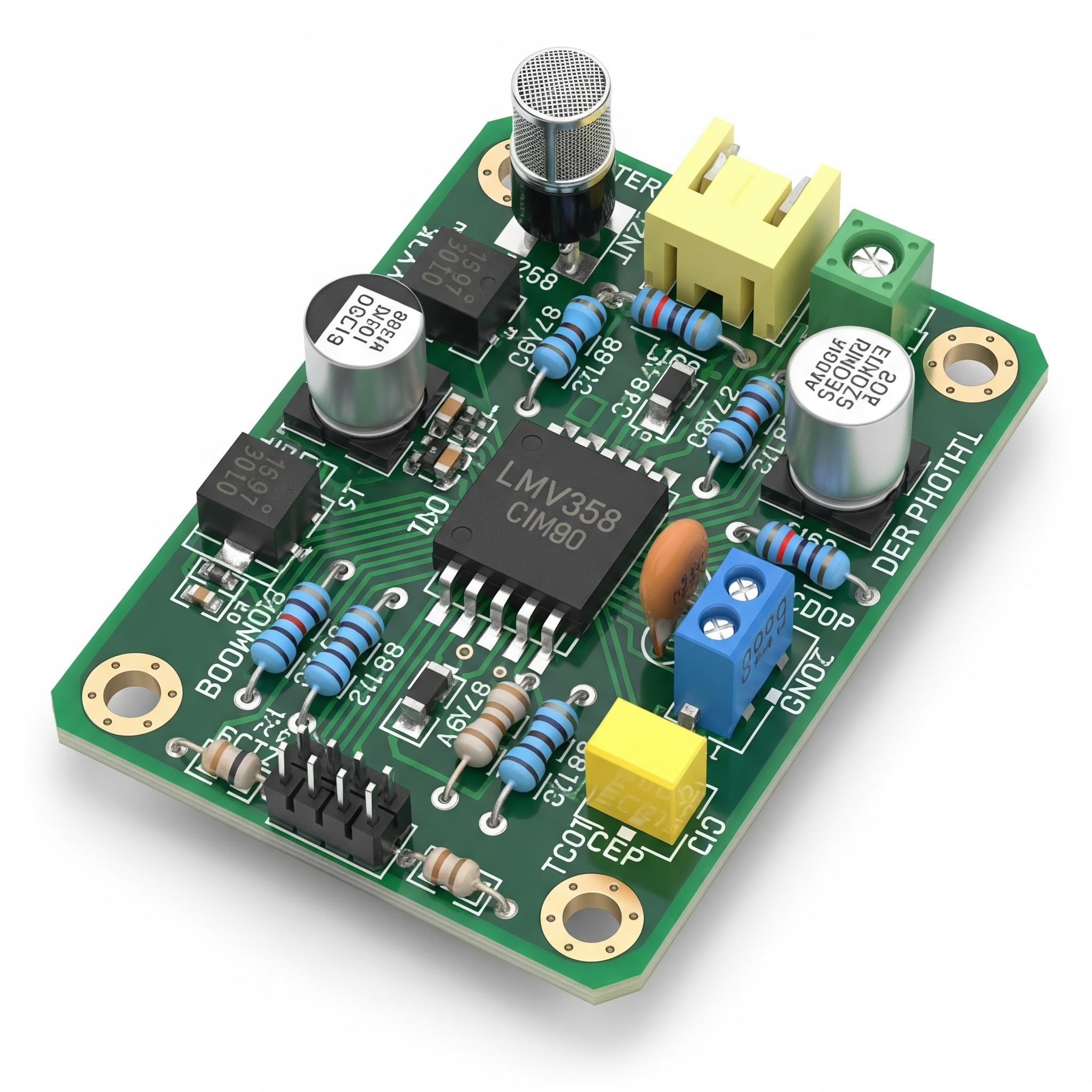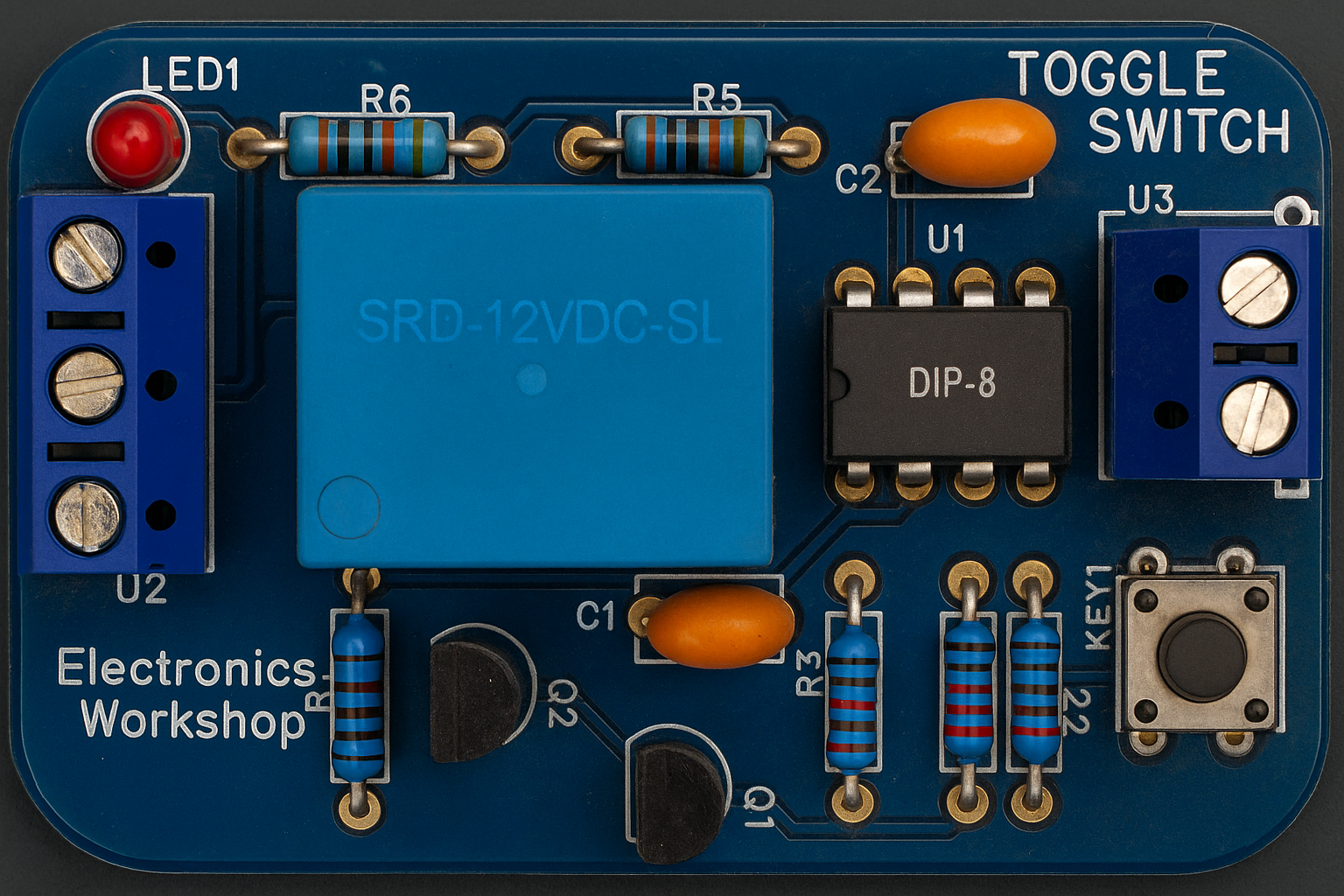Introduction
The MAVLink Long-Range System (mLRS) is an open-source, bidirectional telemetry link designed for UAVs, drones, and autonomous vehicles. It uses LoRa modulation to achieve robust, long-distance, low-bandwidth communication between a ground station and a vehicle using the MAVLink protocol.
The E77-900M22S module is based on the STM32WLE5CCU6, is an ideal core for this system because it combines:
- A Cortex-M4 MCU,
- A LoRa transceiver (sub-GHz),
- Ultra-low power consumption,
- Integrated UART and GPIO interfaces.

Why E77-900M22S for MAV link Long Range?
| Feature | Benefit |
|---|---|
| Integrated MCU + LoRa | All-in-one chip reduces component count and wiring |
| 868–930 MHz ISM band | Long range (up to 5.6 km line-of-sight) |
| AT Command UART | Easy to interface with flight controllers or host MCUs |
| Ultra-low power sleep mode | Ideal for airborne or solar-powered systems |
| Compact 14 × 20 mm size | Suits small drone builds and remote sensors |
PCB Manufacturer
PCBWAY is a highly skilled company specializing in PCB manufacturing. They offer their services at incredibly low prices, such as providing 10 PCBs for only $5. Additionally, new members receive a $5 bonus. The website allows customers to upload their Gerber Files and place orders.

PCBWAY is known for producing PCBs of exceptional quality and maintaining high standards, which is why many people trust them for their PCB and PCBA needs.
Below are some of my PCB’S manufactured by PCBWAY and I am fully satisfied by their Quality of service they provide
Features
- Under ideal conditions, using transparent transmission protocol , the communication distance can reach 5.6 km;
- Under ideal conditions, using Lo Ra W AN standard firmware, the communication distance can reach 3.5 km;
- The maximum transmit power is 21.5dBm , multi-level software adjustable;
- E77-400M22S supports the global license-free ISM 433/470MHz frequency band;
- E77-900M22S supports the global license – free ISM 868/915 MHz frequency band;
- E77-400M22S supports Lo Ra W AN 1.0.3 EU433/CN470 standard;
- E77-900M22S supports Lo Ra W AN 1.0.4 EU868/US915/AU915/AS923/IN865/KR920/RU864 standard;
- E77-400/900M22S supports two device types: Class A and Class C;
- ~12SF spreading factors launched to support dense networks ;
- 1.8 ~ 3.6 V power supply, and any power supply greater than 3.3 V can ensure the best performance;
- External crystal uses 32.768KHz high precision industrial crystal and 32MHz high precision industrial active temperature compensation crystal;
- 14.0*20.0*2.7mm small size patch package, conducive to system integration development;
- Industrial grade standard design, supports long-term use at -40~+85℃;
- Optional dual antennas (IPEX/stamp hole) facilitate user secondary development and integration;
Recommended connection diagram
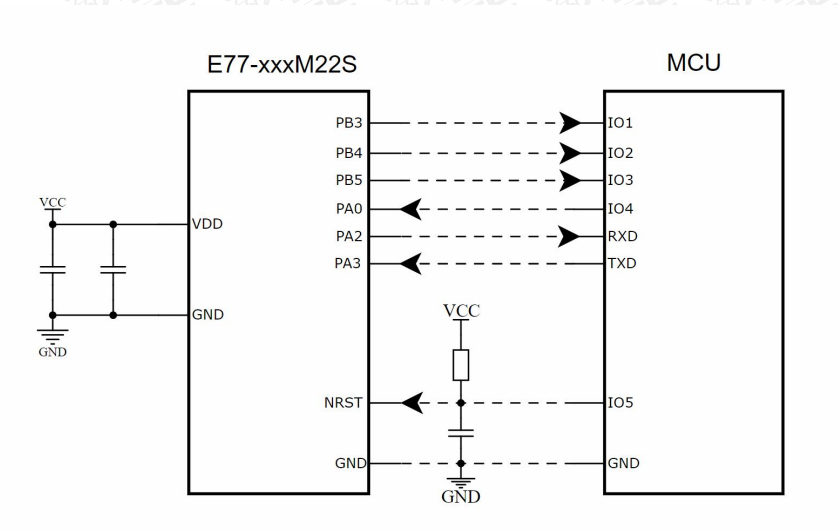
Lora
LoRa (short for Long Range Radio) is a type of Low-Power Wide-Area Network (LPWAN) communication technology. It is designed for long-distance wireless transmission with minimal power consumption and low operational cost. The technology is primarily developed and promoted by the international company Semtech. LoRa operates in unlicensed ISM frequency bands worldwide, including 433 MHz, 470 MHz, 868 MHz, and 915 MHz, making it suitable for a wide range of global applications.
LoRaWAN
The LoRa Alliance is a global, non-profit organization established in March 2015 under the leadership of Semtech. It introduced the LoRaWAN protocol, a low-power wide-area network (LPWAN) standard based on an open-source MAC layer.
Network Architecture:
- Topology: Star network
- Components:
- LoRa nodes/modules
- Gateways or base stations
- Network server, which includes:
- Network control
- Application server
Device Classes in LoRaWAN:
LoRaWAN defines three types of end devices based on their receive/transmit behavior:
Class A – Basic Bidirectional Devices
- Opens two short receive windows after each uplink transmission.
- Uses ALOHA-like protocol with randomized time slots.
- Most power-efficient, ideal for battery-powered devices.
- The server can only send downlink messages immediately after the device’s uplink.
Class B – Scheduled Receive Windows
- Inherits Class A features but adds scheduled receive slots.
- Devices sync with gateway beacons to open receive windows at predefined times.
- Allows the server to predictably send downlink messages.
Class C – Continuous Reception
- Keeps the receive window open nearly all the time, closing it only during transmission.
- Consumes more power, but provides minimal downlink latency from server to device.
Note: The E77-400M22S and E77-900M22S modules support Class A and Class C operation modes.
Use Cases
Smart agriculture & irrigation
Environmental monitoring
Industrial automation
Remote metering (gas/water/electric)
Drone telemetry
Smart cities
Schematic Diagram

This circuit diagram represents a dual-band long-range wireless communication system based on the Ebyte E77-900M22S (sub-GHz LoRa) and E28-2G4M27S (2.4 GHz) modules. The E77 module is the primary LoRa transceiver, connected to UART2 and SPI interfaces of a host microcontroller, and is powered by a regulated 3.3 V supply from an AMS1117 voltage regulator. It includes support for LEDs to indicate transmission, reception, and network status, along with a reset and bind button for configuration or firmware upgrade. The E28 module is controlled via SPI and provides a secondary communication link, possibly used for higher-speed short-range data. Debugging and programming access are available through SWD pins, and the overall system is designed for low-power, long-range telemetry applications such as MAVLink communication in drones or remote sensing.
PCB Files

3D Files

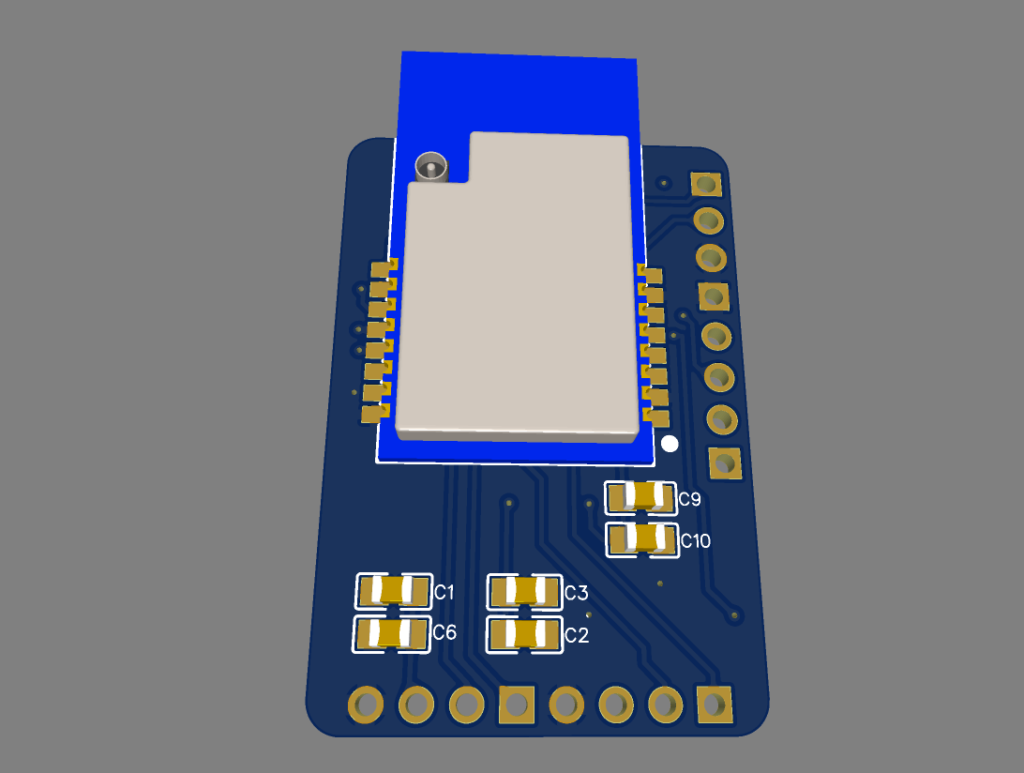
Manufacturing Files
Gerber
Position File
Bill Of Materials
Order Directly from PCB WAY
I have already uploaded all these required manufacturing files in PCBWAY website. You can easily go to the below link and place you order, and get your Own Home Automation PCB manufactured from one of the best pcb manufacturer PCBWAY
Conclusion
In conclusion, this project presents a robust and efficient dual-band telemetry communication system built around the E77-900M22S and E28-2G4M27S LoRa modules. It is specifically designed to support long-range, low-power wireless data transmission, making it highly suitable for applications like MAVLink-based drone telemetry, remote sensing, or IoT deployments. The integration of both sub-GHz and 2.4 GHz bands offers flexibility—balancing range and data rate—while onboard UART, SPI, and SWD interfaces ensure easy development, debugging, and system integration. Overall, the design demonstrates a scalable and adaptable solution for reliable, real-time communication in embedded wireless systems.

